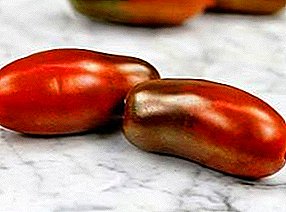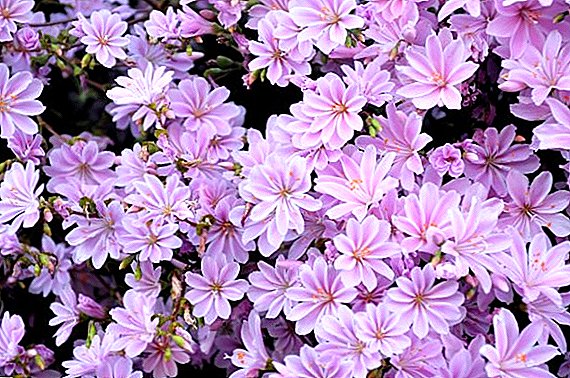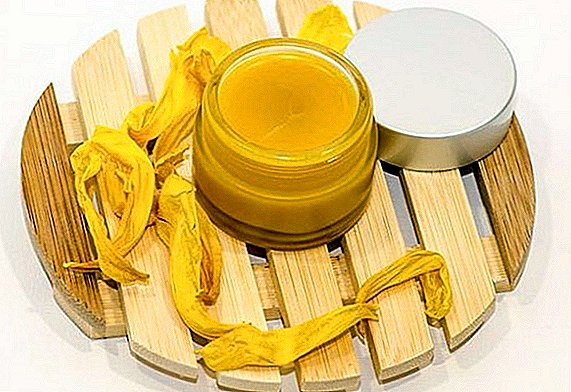 Beekeeping has provided people not only with honey, but also with such a unique substance as wax. Scientists joke that he became the first polymer created by living beings. Even in ancient times, they were covered with wounds, and the heroes of ancient Greek myths were very well acquainted with this wonderful product of beekeeping.
Beekeeping has provided people not only with honey, but also with such a unique substance as wax. Scientists joke that he became the first polymer created by living beings. Even in ancient times, they were covered with wounds, and the heroes of ancient Greek myths were very well acquainted with this wonderful product of beekeeping.
So, Odysseus used it instead of earplugs for his team to save her from singing the sirens, and Daedalus created wings for him from Icarus. Among the many areas of use, the use of beeswax in traditional medicine and cosmetology occupies a special place.
Did you know? Hippocrates and Pliny left recommendations and numerous recipes for the use of wax in the treatment of angina, sinusitis, arthritis. Avicenna used wax to increase lactation in women who breastfeed their babies, as well as to treat cough, for better expectoration.
What is beeswax?
Wax is created by working bees (aged 12-18 days) using special wax glands. Dry scales of wax, bees grind jaws and moistened with a special lubricant. Making a kilogram of wax, they consume up to three kilograms of honey, nectar and pollen.
Why do bees need wax? It is from it that the bees draw out cells — cells, of beautiful pentagonal shape, in which they breed and store honey.
The color of the bee wax is yellow (more whitish in spring), but the shades of yellow may vary depending on the diet of the bees (a high content of propolis gives a greenish tint, and under the sun the wax becomes lighter). Pure white wax is obtained by industrial distillation with special bleaching.

The wax is obtained by melting and filtering the honeycomb scraps. Melting wax begins at temperatures above +62 ° C. At home it is best to melt it in a water bath. The classic version of such a bath with simultaneous filtering:
- Take two identical containers (stainless steel, aluminum, ceramics, refractory glass) with handles.
- Crumble the trimmed honeycombs into one container and tie it on top with a gauze cloth, pour water (30-40% of the volume) into the second container and put it on fire.
- After the water boils, turn the container with the wax upside down and put it on the pan with water, fixing it well.
- Leave for 2-3 hours on low heat. The density of beeswax under the influence of temperature will decrease. Switch off, cover the upper container with a blanket and leave to cool (it is possible overnight). In the morning in the lower container will be hardened a piece of wax.
Important! In the case of overheating beeswax (about 100° C) - he will lose all his healing properties.

From what quality you have beeswax, its possible benefits and harm depend. You can distinguish real wax by the following featured:
- the smell of honey or propolis;
- on the cut surface has a matte shade;
- color does not change when heated;
- soluble in fats, but not in water;
- does not leave greasy stains on hands when kneading;
- sinks in water at room temperature;
- does not stick to teeth when chewed;
- high price.
It is interesting to read about the benefits of different types of honey: lime, acacia, phacelia, coriander, rapeseed, pumpkin.
The chemical composition of beeswax
Wax differs in complexity of composition and includes four groups of compounds. Its main component is esters (73-75%). There are more than two dozen of them and they are formed from higher fatty acids and alcohols.
Esters ensure the safety of wax, protecting it from chemical reactions. Wax also includes:
- hydrocarbons (chemically inert alkanes range from 10 to 14%);
- free fatty acids and glycerin - from 13 to 14%;
- free fatty alcohols - 1-1,25%.
The wax also contains water (0.1 - 2.5%), carotenoids (12.8 mg per 100 g), vitamins (the vitamin A content is especially high - 4 g per 100 g of the product), minerals, various impurities (aromatic substances, propolis, shell larvae, pollen, etc.).

The total number of elements in it reaches 300. The ratio of elements depends on the season, geoclimatic features, the breed of bees.
What is useful beeswax?
The most beneficial effect on the human body is beehive wax. is he possesses:
- bactericidal and antibiotic properties;
- anti-inflammatory action;
- regenerating and healing properties (stimulates tissue growth);
- adsorbing effect (removes toxins and decomposition products from tissues);
- analgesic properties.
In folk medicine, such properties of beeswax as the ability to slowly release heat (with compresses), induce blood flow, improve blood supply, etc., have found wide use.
Did you know? Mages and sorcerers believed that wax, like fat, contains vitality and through it it is possible to gain power over people — it is only necessary to sculpt a wax doll and perform a certain ritual.
Wax cleans and disinfects the mouth. Popularity received the chewing of honey comb (cut pieces of sealed honeycombs). Chewing beeswax is pleasant and useful - it softens in the mouth, has a taste of bee bread and honey.

Chewing wax has a beneficial effect on the gums, causes active salivation and secretion of gastric juice (the food is better digested). Chewing honey is recommended for periodontal disease, for a cold, for coughing and even for hay fever.
To the question, “Is it possible to eat beeswax?”, There is the following answer: yes, but its daily “dose” should be 10 g. Specially ingest the wax is not necessary, but usually, when chewing honeycombs, some of it enters the stomach ( which helps with colitis). Chewed wax can be easily melted and continued to be used.
External treatment with beeswax
In most cases, wax is used for external use. At home, it is not difficult to prepare from it a variety of means: ointments, balms and other means.
Sinusitis
In the treatment of maxillary sinuses benefit of beeswax for the body due to its biochemical properties. For the preparation of tools will need 20-30 g of wax and two tablespoons of milled yarrow. The wax should be melted and mixed with grass.

Apply the warm mixture to the region of the maxillary sinuses for 25 minutes. Cover with a terry towel. After removing the wax, the zones of the maxillary sinuses should be lubricated with “Asterisk” balm. For the effectiveness of treatment, it is necessary to conduct 1-2 sessions daily for 3-5 days.
Important! Honey should not be given to young children, as it can easily choke with a sticky sweet composition. It will also be difficult to control the amount of wax ingested.
Pain in the joints
Traditional medicine has traditionally applied masks, applications and ointments for joints based on beeswax:
- Application Apply liquid wax (100 g) on a cotton base, wait 15 minutes, attach to the joint, wrap with a wool cloth and hold for 15 minutes. After the session - remove the wax, wrap the joint with a warm cloth. The application is carried out daily for two weeks.
- Mask. Melted wax (100 g) mixed with honey (1 tsp), put on gauze and attach to the sore spot. Cover with cellophane and a woolen scarf for 30 minutes. Perform the procedure once a day for two weeks.
- Ointment. Finely chop 30 g of white mistletoe, mix with 20 g of lard, boil for 15 minutes, strain. In the broth add wax (30 g), camphor (8 g) and put in a water bath. Apply as needed on the sore joint.

Corns and corns
To eliminate callosities and corns, a therapeutic agent from wax (100 g), propolis (100 g) and juice of one lemon is used. Preparation is simple: in the melted wax with propolis should add juice and mix.
Foot pre-steam in hot water with soda. Attach a flat cake from the mixture to the problematic place, bandage it or fix it with an adhesive plaster. It requires 3-4 such sessions, after which the corn can be safely removed.
Cracked heels
- Wax well helps with the healing of cracks on the heels. To do this, you will need wax (50 g), licorice root (20 g of powder), sea buckthorn oil (10 ml), from which the mixture is prepared, after which it is well ground. Steam out the foot, apply the tool and leave for 15 minutes. After the procedure, treat the heels with spermaceti cream.
Read also how to properly collect, accept and preserve the healing properties of royal jelly.
Trophic ulcers
For the healing of difficult wounds and boils are used ointments, balms:
- Wax (warm), mix with olive oil (1x2). Pre-treat the wound with hydrogen peroxide, apply the tool. Combine with other drugs.
- Wax (30 g) mixed with hemp (300 g) and hard-boiled egg yolk. After that, stand in a water bath for 20 minutes.

The use of beeswax in cosmetology
The beneficial properties of beeswax are used in the production of cosmetics, it is contained in many well-known cosmetic means. It is not difficult to make a lot of preparations for skin, hair and nails according to popular recipes from wax.
For hair
Effective mask for damaged hair:
- melt half a cup of wax;
- add a glass of olive oil, a tablespoon of coconut oil and mix;
- Cool and drop 10 drops of ylang-ylang oil.
For face skin
Beeswax effectively applied for skin care:
- Dry skin. Melt the wax (30 g), add a tablespoon of butter and carrot juice. Stir and apply on the skin (wait 20 minutes);
- Lip For the preparation of balm, it is necessary to add almond oil and cocoa butter (1x1x2) to the melted wax. After cooling, you can apply. The balm heals the cracks in the lips and protects them well.
- Youthful skin. Beeswax well helps to get rid of acne and youthful acne. Cleansing cream is made from wax (20 g), celandine powder (2 tbsp. L.), Glycerin (1 tbsp. L.). Black dots are also removed from the skin of the cheeks and nose by applying a small layer of pure warm wax.

Important! In order for the wax to not prematurely freeze when mixed, it is necessary to ensure that the temperature of all the ingredients of the product is the same.
For nails
To protect the nail plates well helps rubbing clean wax. It should be rubbed in small portions into the entire area of the plate (grasping the cuticle). The wax should be completely absorbed.
Beeswax storage rules
To beeswax has not lost its properties as a therapeutic and cosmetic, it should be properly stored. Beekeepers recommend placing it in a dry and dark place, but remember that wax is afraid of heat.
Of external pests, wax and moths can threaten wax; therefore, it should be stored in a glass or ceramic container. It will also keep the smell and color of the wax.
Did you know? The wax moth is able to break down the wax and, thanks to special enzymes, assimilate it. Enzymes from its larvae are used in the treatment of tuberculosis - they dissolve the Koch bacillus wax protection.

In general, the shelf life of beeswax is unlimited. It is often used as a conservative in cosmetics. During long-term storage, a greyish patina is formed on it - patina, which also indicates the purity of the wax.
Possible harm from beeswax
Contraindications to the use of beeswax are limited to individual intolerance to honey and other beekeeping products. Before using beeswax masks or creams, it is advisable to check their effect on the back of the hand. Allergy to beeswax occurs, although quite rarely.












